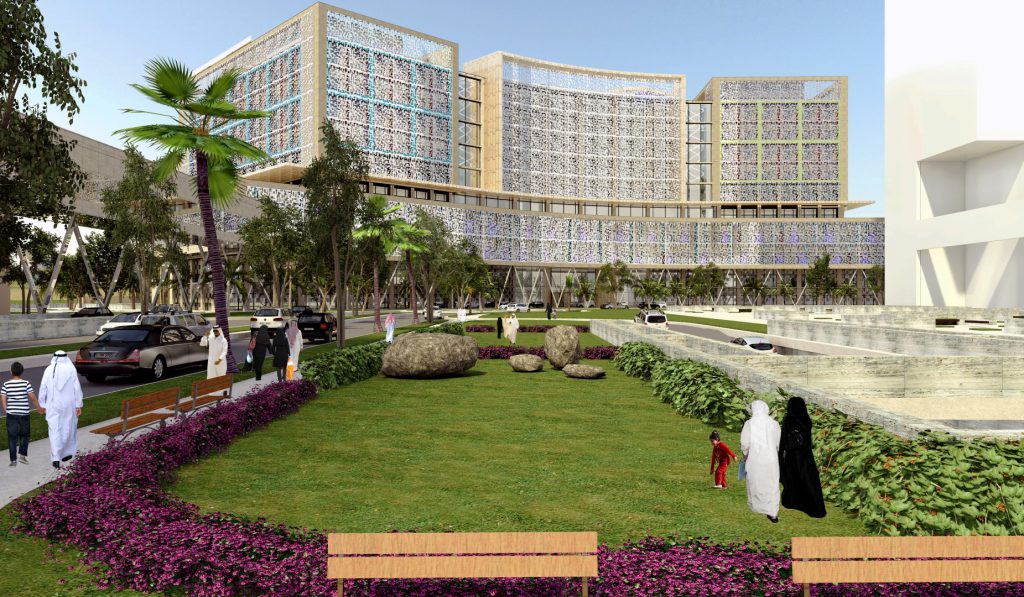Rwanda’s Digital Healthcare Transformation: A Model for the Future
Rwanda has taken significant steps towards achieving universal healthcare by embracing innovation and strategic planning. At the forefront of this initiative is King Faisal Hospital Rwanda (KFHR), the country’s largest multi-specialty referral hospital. Serving over 300,000 people annually, KFHR is committed to meeting global healthcare standards, including maintaining an optimal doctor-to-patient ratio and reducing waiting times.
Before 2024, KFHR operated with separate IT software systems and paper-based processes, which often led to inefficiencies. The lack of an integrated scheduling system sometimes resulted in overlapping appointments, while manual insurance verification and payment processing contributed to extended waiting times. Coordination between departments such as radiology, laboratory, and pharmacy was also challenging, leading to delays in accessing diagnostic results and medications. Improving queue management transparency was a key priority for the hospital.
To address these challenges, the Government of Rwanda, through collaboration between the Ministry of Health and the Ministry of ICT and Innovation, initiated the development and implementation of the Integrated Health Management Information System (IHMIS) at KFHR. This system aims to eliminate silos by integrating all hospital departments onto a single platform, enabling seamless communication and coordination.
Key Features of IHMIS
The IHMIS is a fully integrated platform that includes essential modules such as the Laboratory Information System, Radiology Information System, Picture Archiving and Communication System, and a patient portal. Designed to support a 100% paperless environment, the system features advanced security measures, including firewalls, antivirus, and malware protection. It also enables seamless integration across all hospital departments.
With open APIs and connectivity to external systems, IHMIS is built around a patient-centric design. A strategic partnership between the Tony Blair Institute for Global Change (TBI) and the Ministry of ICT and Innovation played a crucial role in the project. TBI helped develop the strategic framework for the project’s delivery, conducted a comprehensive needs assessment, and built the capacities of the Chief Digital Office at KFHR to manage the project rollout.
Enhancing Patient Engagement and Efficiency
IHMIS enhances patient engagement by providing features such as SMS notifications for appointments and test results, keeping patients informed. It streamlines processes by automating registration, integrating with the National Identification Agency to minimize human error and reduce registration time. Insurance verification and payment processing are also streamlined, thereby reducing waiting times.
The system integrates all radiology modalities, such as Magnetic Resonance Imaging, computed tomography scans, and laboratory analysers, to enhance accuracy, reduce errors, and ensure faster turnaround times. It is also integrated with the Picture Archiving and Communication System, ensuring that patients have a single, unified medical record. This optimizes patient data management, insurance verification, and payment processing, reducing waiting times and administrative burdens.
Real-World Impact
First-hand experiences from patients and hospital staff highlight the positive impact of IHMIS. For Jacky Nyakayiro, a patient admitted to the medical ward, the registration process took just five minutes, and she was able to complete her payment conveniently via MTN MoMo. Insurance verification was swift, and the laboratory process ran smoothly, with invoices generated instantly and test results notified via SMS.
Innocent Bizoza, who visited the Accident and Emergency Department, praised the reduction in paperwork. Cashless payments, e-prescriptions, and automated billing made the process seamless. Improved communication through SMS notifications ensured he was always updated, making time management easier.
Hospital leadership also highlighted the system’s impact. The Director of Nursing and Midwifery at KFHR emphasized how IHMIS had revolutionized clinical workflows. The shift from the previous system fully digitized their processes, significantly improving efficiency, reducing costs, and enhancing patient care.
Looking Ahead
KFHR’s digital transformation aligns with Rwanda’s broader national objectives, including the second National Transformation Strategy and Vision 2050, which emphasize innovation and efficiency in healthcare delivery. The hospital’s experience offers a scalable model for other institutions in the region, demonstrating the power of collaboration between government agencies, international partners, and technology providers.
Looking ahead, KFHR aims to further enhance its capabilities by integrating artificial intelligence tools for predictive analytics, expanding telemedicine services, and strengthening its role in medical education. Partnerships with strategic partners such as the Tony Blair Institute will be instrumental in realizing these ambitions.
King Faisal Hospital Rwanda stands as a testament to the potential of digital innovation in overcoming systemic healthcare challenges. By embracing IHMIS, the hospital has set a new standard for patient-centered care and operational excellence. As Rwanda continues to advance toward universal healthcare, KFHR’s journey serves as an inspiring blueprint for leveraging technology to revolutionize healthcare delivery, not just in Rwanda but across Africa.







